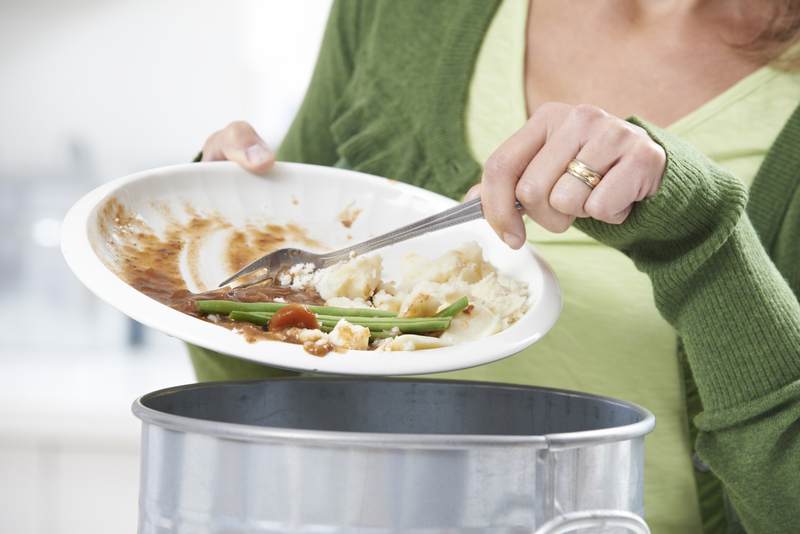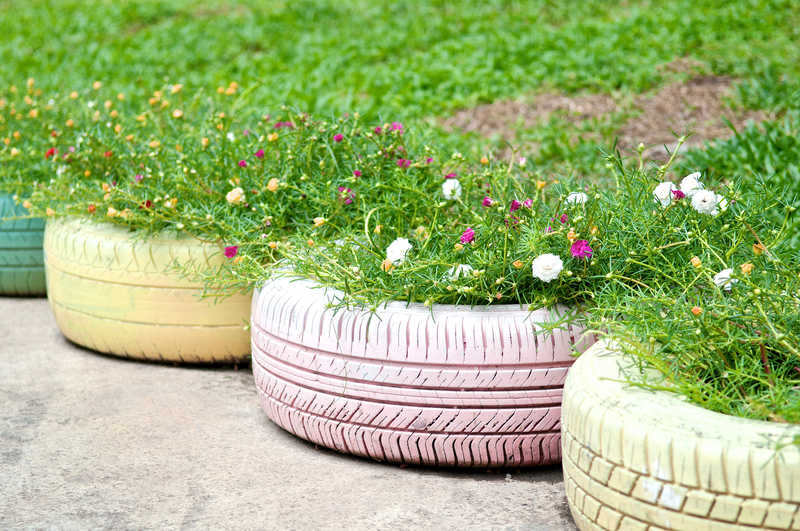Reduce Costs: Smart Disposal of Bulky Waste Items
Dealing with bulky waste items can be an expensive, frustrating, and time-consuming task for homeowners, businesses, and property managers. Whether you are decluttering your garage, renovating an office, or handling estate cleanouts, smart disposal strategies can help you reduce costs and minimize environmental impact. In this comprehensive article, we explore practical tips, cost-saving techniques, and eco-friendly solutions for the efficient disposal of bulky waste.

Understanding Bulky Waste Items
Before diving into cost-effective disposal methods, it is essential to understand what qualifies as bulky waste. Typically, these are large items that do not fit into regular council waste bins or standard curbside collections.
- Furniture: sofas, armchairs, beds, wardrobes
- Large Appliances: refrigerators, washing machines, dryers, ovens
- Mattresses
- Carpets and Rugs
- Electronic Waste (e-waste): old televisions, computers, printers
- Outdoor Equipment: lawnmowers, bicycles, grills
- Construction Debris: timber, doors, tiles
Why Proper Bulky Waste Disposal Matters
Improper disposal of large waste items can negatively impact the environment, incur hefty fines, and create safety hazards. Most importantly, smart and responsible management can offer significant cost advantages.
- Save money on removal services or tipping fees
- Reduced environmental footprint through reuse or recycling
- Compliance with local regulations and bylaws
- Avoiding clutter, pests, and property damage
Strategies to Cut Costs When Disposing of Bulky Waste
1. Plan Ahead and Sort Efficiently
Preparation is crucial. Before you start removing items, take a thorough inventory of every bulky piece. Sorting items by material (wood, metal, electronics, textiles) helps determine the best disposal route and prevents mixing, which can lead to higher charges and landfill fees.
- Separate reusable and recyclable items
- Group items by material for simpler recycling
- Identify items that require special handling, like hazardous e-waste
2. Check Local Bulky Waste Collection Services
Municipalities often offer bulky waste collection services either free or at subsidized rates. These services may run on scheduled days or by request. Contact your local sanitation department to find out:
- Accepted items (not all items may be eligible)
- Collection dates and frequency
- Fees, permits, or limitations (e.g., item count, weight limits)
3. Donate Gently Used Items
- Charities: Goodwill, Salvation Army, Habitat for Humanity
- Homeless shelters, schools, or community centers
- Online gift groups (e.g., Freecycle)
Tip: Donation receipts may offer a tax deduction, providing additional savings!
4. Sell Valuable or Usable Bulky Items
Why pay to dispose of perfectly good items? You can recover some costs (or even profit) by selling:
- On classified websites (Craigslist, Facebook Marketplace, Gumtree)
- Through online auction platforms (eBay)
- At local garage or yard sales
Well-maintained furniture, vintage appliances, and specialty items often attract buyers seeking bargains or unique finds. Additionally, buyers may handle heavy lifting and transportation.
5. Recycle Whenever Possible
Recycling is one of the smartest ways to dispose of bulk waste. Many communities have recycling depots or centers that accept:
- Metals (refrigerators, bed frames, bikes)
- Electronics (TVs, computers, cell phones)
- Wood and timber
- Textiles and carpets
Check for free e-waste recycling programs or community recycling events to reduce your costs even further. Some scrap metal dealers may even pay for your materials.
6. Use Bulky Waste Skip Bin Services Strategically
If you have a significant volume of waste, renting a skip bin can be cost-effective - if you maximize its use. Share with neighbors or coordinate with friends to split the cost.
- Fill the bin efficiently to minimize empty air space
- Know what materials the bin provider accepts
- Avoid prohibited items to prevent surcharges
7. Arrange a Community Clean-Up Day
Pooling resources with neighbors for a community clean-up event spreads transportation and disposal expenses. Many garbage haulers offer discounts for bulk pickups arranged by neighborhood associations, apartment complexes, or residences.
- Coordinate dates for larger collections
- Negotiate group rates with local haulers or skip companies
- Engage volunteers to help load and sort items
8. DIY Bulky Waste Haul to Landfill
For those with a truck and the means to transport, direct self-hauling to local landfills or transfer stations can be inexpensive, especially for small loads. Be aware of site policies:
- Some facilities offer free bulk waste drop-off days
- Sort your load to take advantage of lower rates on recyclables vs landfill waste
- Bring identification and check for residential versus commercial rates
Cost Comparison: Smart Disposal vs. Traditional Methods
| Bulky Waste Disposal Method | Average Cost | Pros | Cons |
|---|---|---|---|
| Municipal Collection | Free to $50 (may vary) | Convenient, legal, reliable | Limited pick-up dates, may not accept all items |
| Donation or Selling | $0 (may earn money or tax breaks) | Eco-friendly, may be profitable | Only possible with items in good condition |
| Private Junk Removal Services | $80-$800 (based on volume) | Quick, handles heavy lifting | Expensive, not always eco-friendly |
| Skip Bin Hire | $250-$550 (varies by size/region) | Flexible timing, high capacity | Must load yourself, permits may be needed |
| Drop-off at Facility | $0-$80 (load size/material dependent) | Lowest cost, immediate solution | Needs transportation, potentially time consuming |
Eco-Friendly Bulky Waste Disposal
The most sustainable methods for handling large waste items focus on reducing landfill waste and maximizing resource recovery. Here are several smart, eco-friendly approaches:
1. Upcycling and Repurposing
Creative DIY projects can breathe new life into old items. Turn wooden pallets into garden furniture, repurpose fabric for craft projects, or use old appliances as storage units. This reduces waste and saves money on new purchases.
2. Special Recycling Programs
Electronics and mattresses contain harmful chemicals and valuable materials. Seek out certified e-waste recyclers or mattress recyclers to ensure safe, responsible disposal - often at little or no cost.
3. Producer Takeback Schemes
Some manufacturers and retailers offer takeback or trade-in programs for bulky items like appliances, electronics, and mattresses. These programs often include free collection. Always inquire at the point of purchase.
Common Mistakes That Raise Bulky Waste Costs
Many property owners inadvertently pay too much by making a few avoidable mistakes when dealing with bulky waste. Watch out for these pitfalls:
- Disposing of items that could have been sold or donated
- Paying for private removal when municipal services are available
- Mixing hazardous waste with general items, leading to extra fees
- Inefficient use of skip bins (leaving empty spaces or exceeding weight limits)
- Missing community recycling events or free bulk drop-off days
How to Choose the Right Disposal Method for Your Bulky Waste
Making smart choices starts with assessing your priorities: cost, convenience, environmental impact, and labor.
- For lowest cost: Prioritize donation, selling, and dropping off at recycling centers. Always check for local free bulk waste pickup dates.
- For fastest removal: Hire a junk removal company or rent a skip bin for immediate disposal.
- For eco-friendliness: Recycle wherever possible, utilize takeback programs, and avoid sending usable items to landfill.
- For minimal effort: Use curbside collection or employ a full-service junk removal team.
Questions to Ask Before Disposing Bulky Items
- Is the item in good enough condition to donate or sell?
- Are there any special disposal requirements or fees?
- Which method offers the best balance of affordability and convenience?
- How can I maximize recycling or reusing to support sustainability?
Responsible and Legal Disposal Matters
Illegal dumping - or "fly-tipping" - is a serious offense resulting in hefty fines and environmental damage. Always use licensed disposal providers and verify that recyclables actually reach certified facilities.
Check:
- Is your waste hauler properly licensed and insured?
- Does the company provide transparent documentation or receipts?
- What happens to items after pickup?

Reduce Bulky Waste: Prevention and Smart Purchasing
One of the most effective ways to lower long-term costs is to generate less bulky waste in the first place. Take a proactive approach:
1. Buy Durable, Long-life Products
Invest in high-quality furniture and appliances that last longer and are easier to repair. Look for products with recyclable or modular designs.
2. Rent, Lease, or Borrow When Possible
Consider renting appliances, party furniture, or home improvement tools. This is especially sensible for one-time events or projects.
3. Embrace Second-Hand Shopping
Whenever practical, buy used items. This supports the reuse economy and reduces your total waste footprint.
Conclusion: Save Money and the Planet with Smart Bulky Waste Disposal
Disposing of bulky waste doesn't have to be costly or harmful to the environment. By leveraging community resources, recycling, reusing, and thinking ahead, you can significantly reduce costs while minimizing your carbon footprint. Whether you are a homeowner, landlord, or office manager, following the above strategies will help you manage bulky waste responsibly and affordably.
Have bulky waste to get rid of? Start by planning, exploring local resources, and choosing the smart, sustainable route. Save money, reduce waste, and protect the planet--one item at a time.